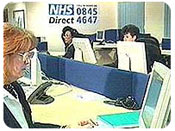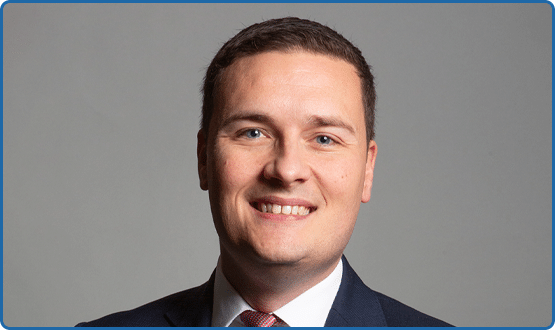IT underpins development of NHS Direct
- 20 September 2007
 |
With almost 8m calls a year, and a wider audience using interactive measures for health information and advice in England, you’d expect NHS Direct to be centred in a large-scale buzzing call centre.
Already this year, the service has taken 4m calls and the August Bank Holiday weekend resulted in a rise of calls relating to pollen and heatstroke.
So it’s surprising to see just how calm and serene everything appears at NHS Direct’s Beckenham call centre, just a few mornings after the heat wave of the Bank Holiday weekend.
“The GP surgeries are open right now, so the call centres are less hectic, but believe me, it’s a lot busier on evenings and weekends,” says Chrys Short, regional head of operations.
The past year has been NHS Direct’s busiest year with a number of health events and scares, ranging from the Polonium poisoning incident in London in January, to the current Foot and Mouth outbreak.
As well as being responsible for the NHS’ information and advice service, the 37 NHS Direct call-centres are also responsible for providing responses to health scares. In addition, they service the Choose and Book appointments line, provide a point of contact to patients with long term conditions and a dedicated out-of-hours service for individual primary care trusts.
NHS Direct switches to VOIP
Adrian Price, national ICT infrastructure manager says : “With all the services we provide, it is essential that we have the best IT system in place to ensure that we are able to provide the best and most efficient service possible, meeting targets set for us by the government and maintaining the essentials of good quality patient care.”
In order to do this, the service has been involved in a large-scale technology refresh since it began. Staff now use triage software from Clinical Solutions and most recently, the service has been made 100% voice over internet protocol (VoIP) based to make call handling and patient treatments more efficient.
Price added: “Calls are serviced around our 37 sites and previously a call was sent to the nearest centre based on the local dial code and placed in a queue if all operators were busy. What we have moved to now is a more centralised approach, which allows us to balance call volume more fairly and allocate calls to centres accordingly.
“We have partnered with BT to install technical hubs in five of our larger centres – Newcastle, Nottingham, Beckenham, Milton Keynes and Dudley. The other centres will run VoIP through these hubs over the N3 network and using call distribution technology, calls will be transferred to an available agent anywhere in the county if a line is engaged when routed originally.”
The move to VOIP has required the installation of over 2,000 IP handsets across the 22 sites and all staff have had to be trained on how the system works. NHS Direct has a flexible contract with N3 allowing them to buy bandwidth as required and BT engineers are assigned to the service on a 24/7 basis, should a need for assistance arise.
Were there to be a catastrophic failure, the service can revert to paper-based systems and calls can continue to be taken using traditional handsets.
Benefits of a single patient record database
Previously, NHS Direct’s patient records were located within 37 separate databases so calls could not be shared between locations. NHS Direct now uses a single patient database supplied by Clinical Solutions, allowing staff to work from shared call queues across locations; for instance on a regional or national basis.
With the software, the workload is shared across the country, ensuring maximum benefit to the patient. Equally, all sites have easy access to the central database, so duplicate records are eliminated. This provides an even safer and more effective way of responding to patients’ calls.
Philip Sugrue, head of IT at the Beckenham NHS Direct call centre, said: “The decision support system helps to enable call handlers to ensure that calls are being handled effectively and gives the nurses something concrete to work with when they call the patient back.
“If we transfer a patient to another service, then we can send over a complete set of notes on the call to them which they can save and use during treatment. We are working with Connecting for Health to link call information with the NHS Spine, but there are technicalities there we have to look into, as obviously you can’t see a caller to verify they are who they say they are.
he added: "All data is backed up in a secure data store and a voice recorder system is in place to record calls. Patients can opt-out of the service by listening to a recorded data protection information speech and requesting that the information is not shared.”
Achieving results
The new systems seem to be helping to deliver results. NHS Direct recently delivered its best ever set of statistics on response times – in their last published results, 98% of the urgent calls (P1) were triaged within 20 minutes – exceeding the 95% target set by the DH.
All calls requiring triage within 60 minutes (P2) and 240 minutes (P3) were also dealt with within the required timescales set by the DH.
Technology to empower staff
Short attributes this impressive performance to the commitment of staff, stressing that they are not just young call centre staff, but qualified health professionals who understand what they are hearing and reading off of a screen.
“It is a credit to the staff we have that we are achieving our targets. What is key to this is the commitment of our staff to providing immediate care, putting the safety of our patients first. We must emphasise that all staff employed by us are qualified personnel, who have a strong understanding of the way medicine works.
He adds: “The triage system we use is of course a great aid to the work we do, but first and foremost the public must feel confident that we are providing them a service of the highest quality and with their interests at heart. For this reason, we do not employ thousands of call centre agents, but a handful of call agents and a team of highly experienced nurses.”
Next steps
Price says that these developments, together with the re-launch of the NHS Direct website, and extended digital TV presence have helped to increase patient awareness of the service.
“It has been a busy year for us, from a huge rise in Christmas calls, to the Polonium outbreak scare, fears over Pandemic Flu and Foot and Mouth and then we’ve had the flooding problems and patients feeling ill in the summer that never was. Without the IT presence that we’ve equipped ourselves with, I think we may have struggled with the demand.”
Over the next six months, the service now plans to enhance the service by using computer/telephony integration to link caller ID information to NHS Direct’s database of patients. This would enable agents to see a pop-up screen of patient details whenever they take a call.
NHS Direct is also working on closer links between its website and its call centre, which would allow patients using the website to speak to call centre agents using VoIP.
Joe Fernandez




